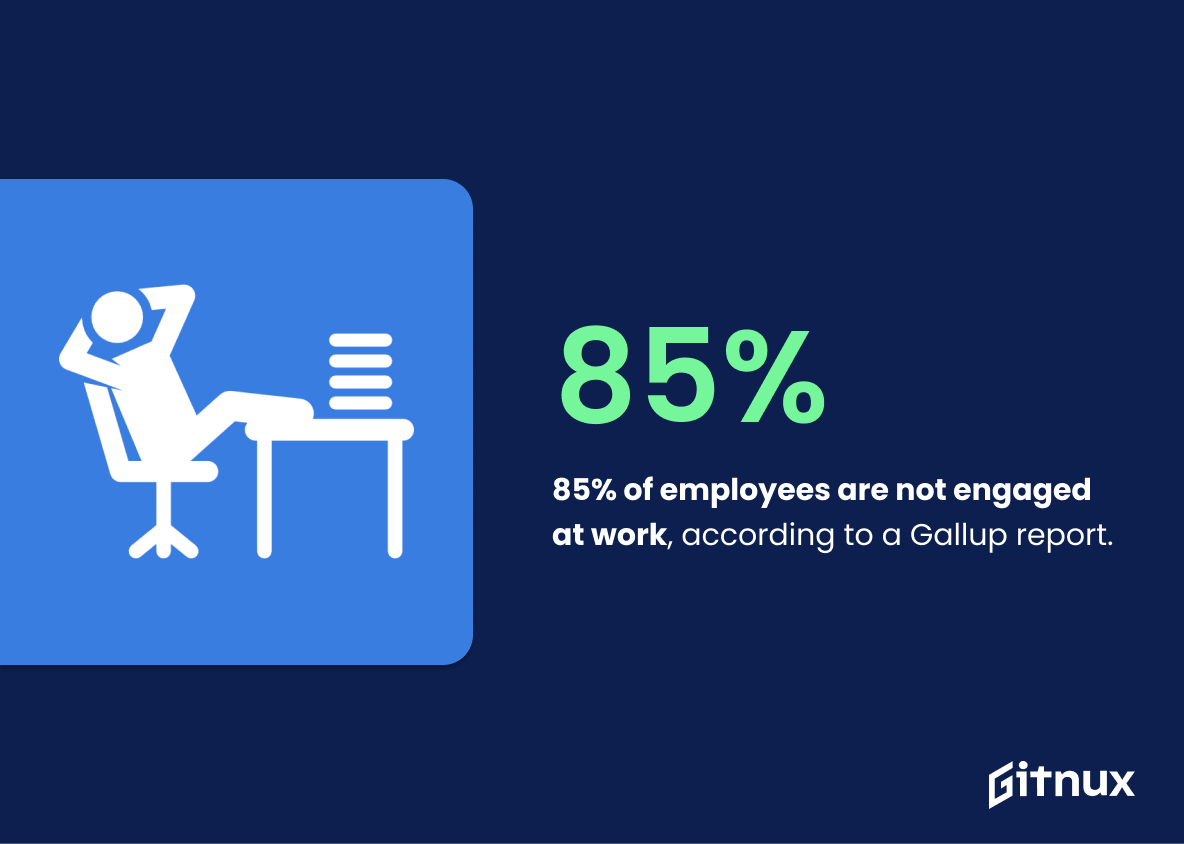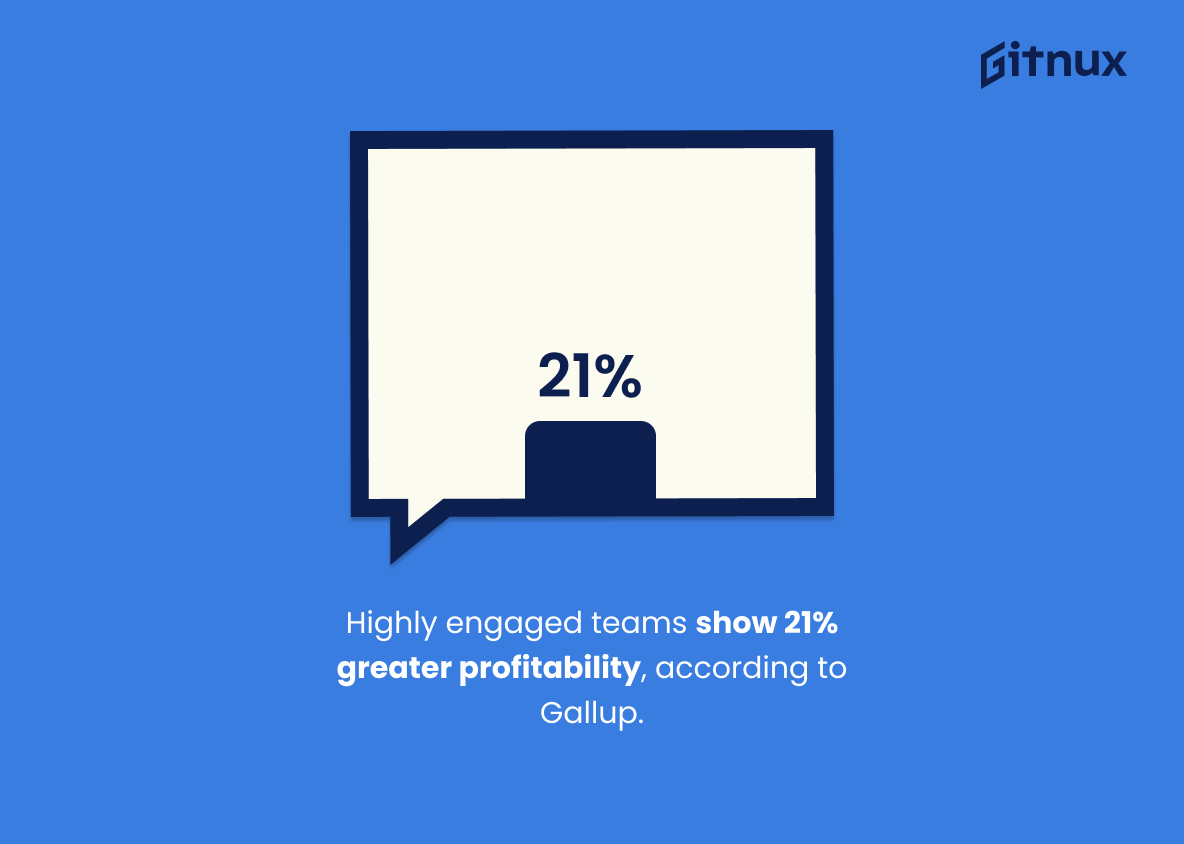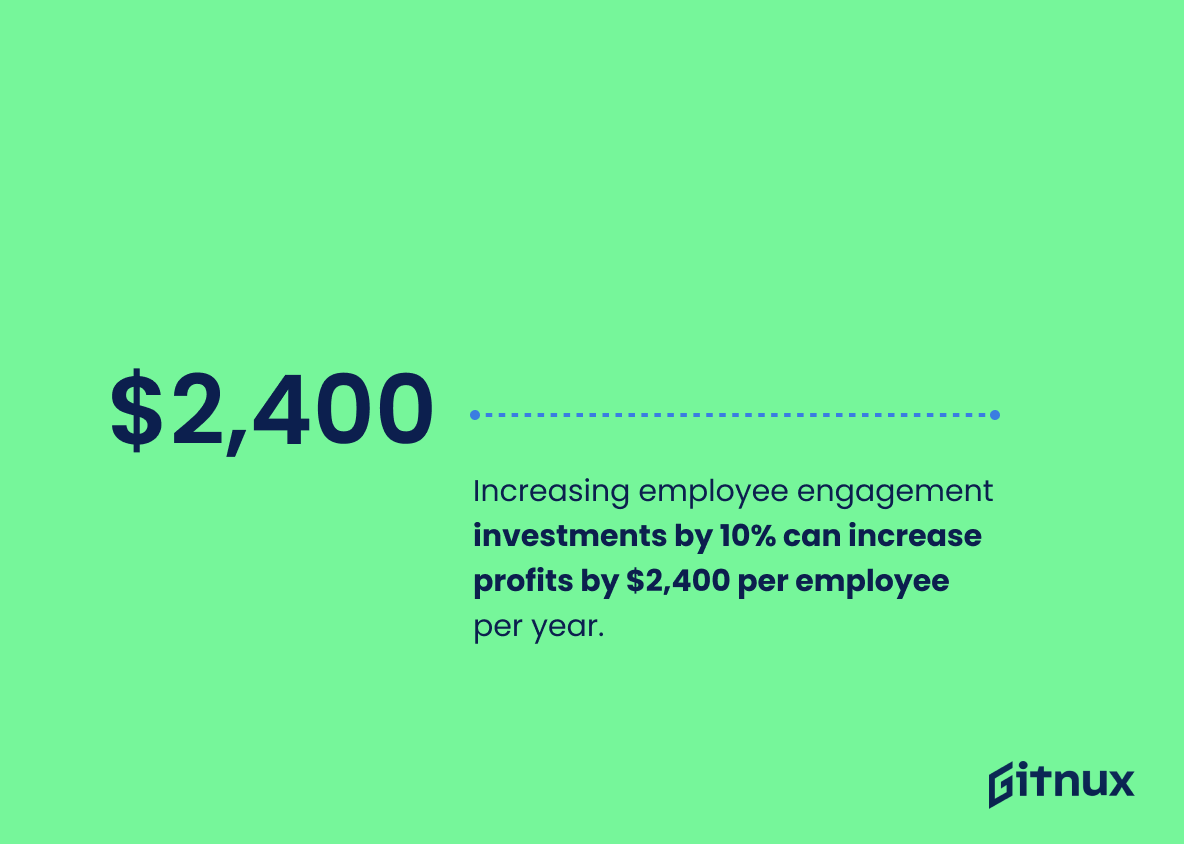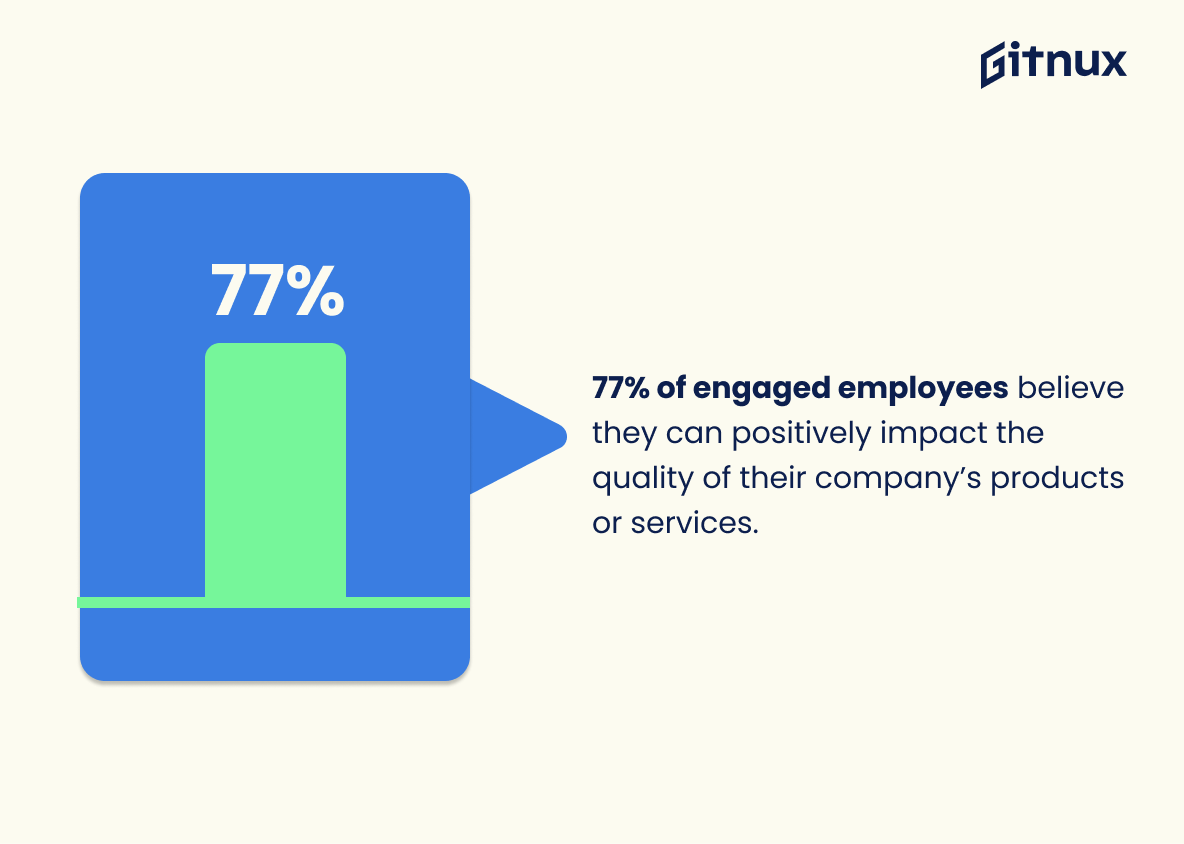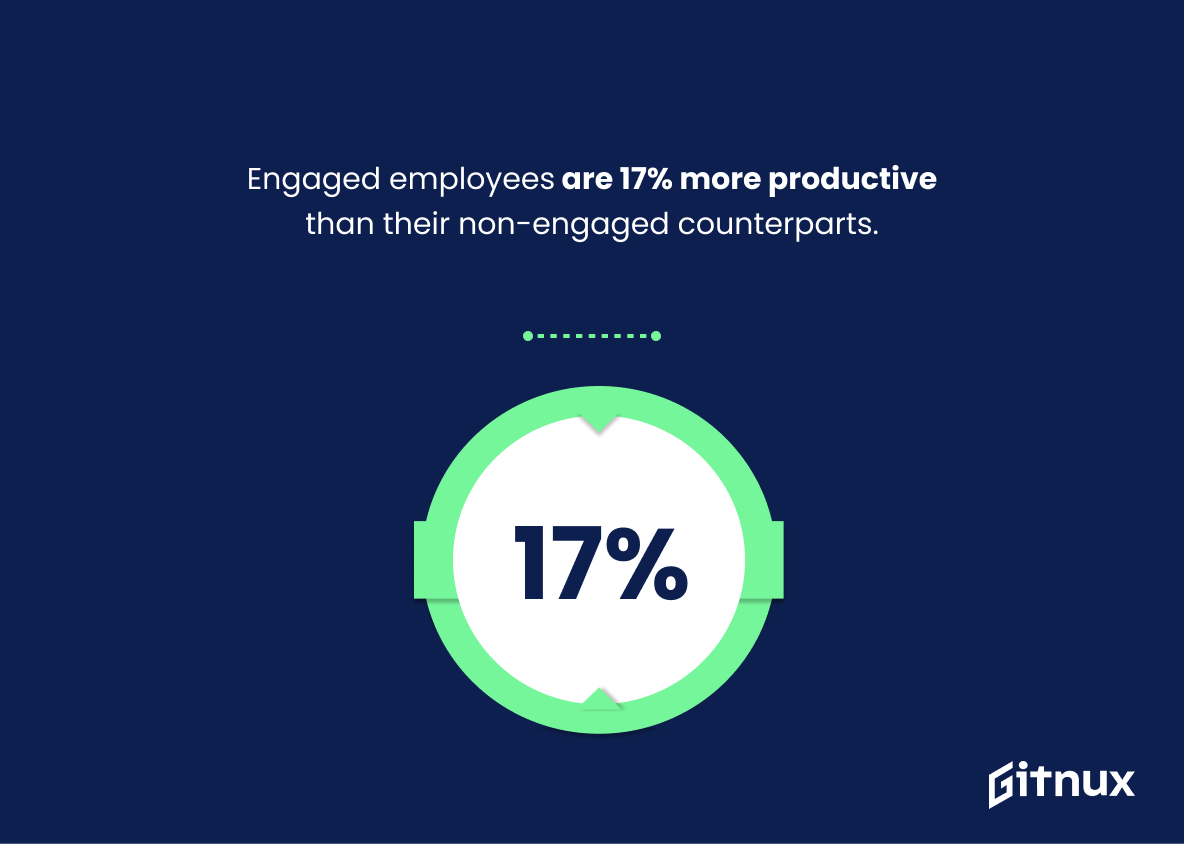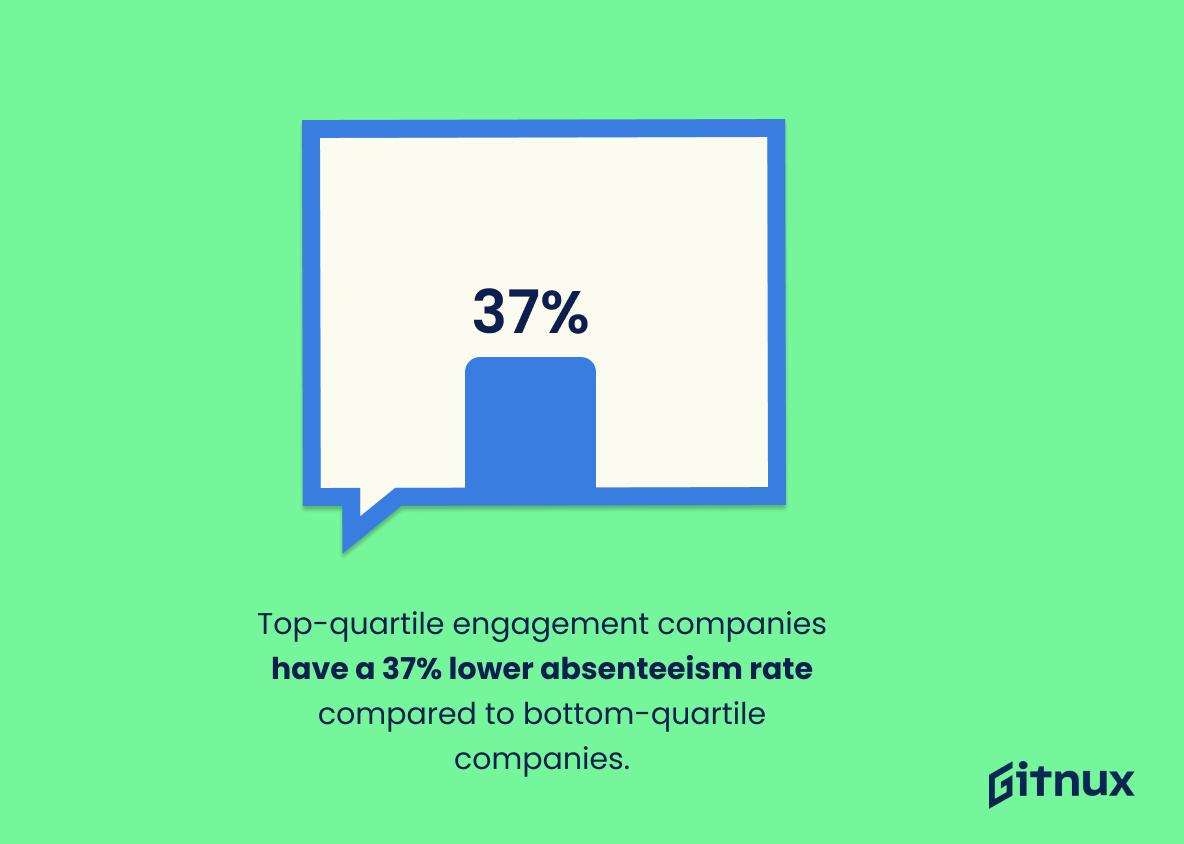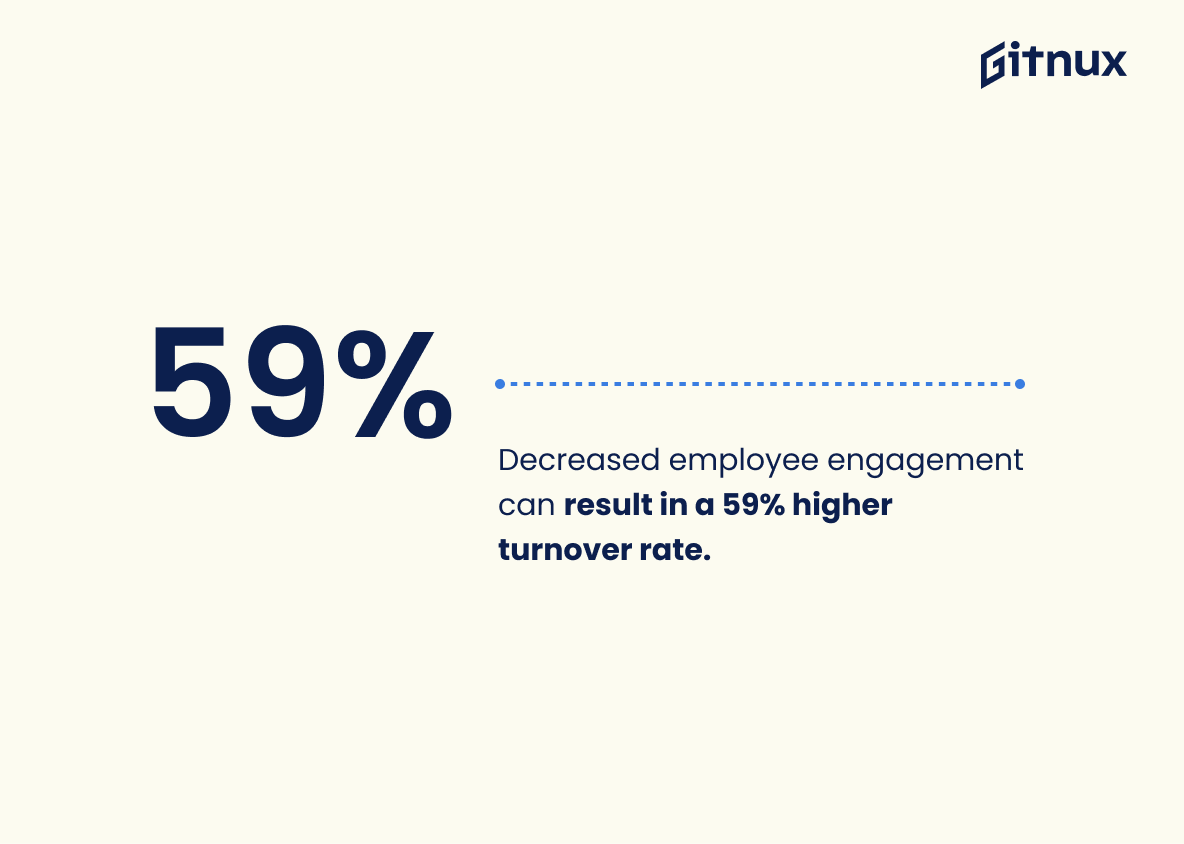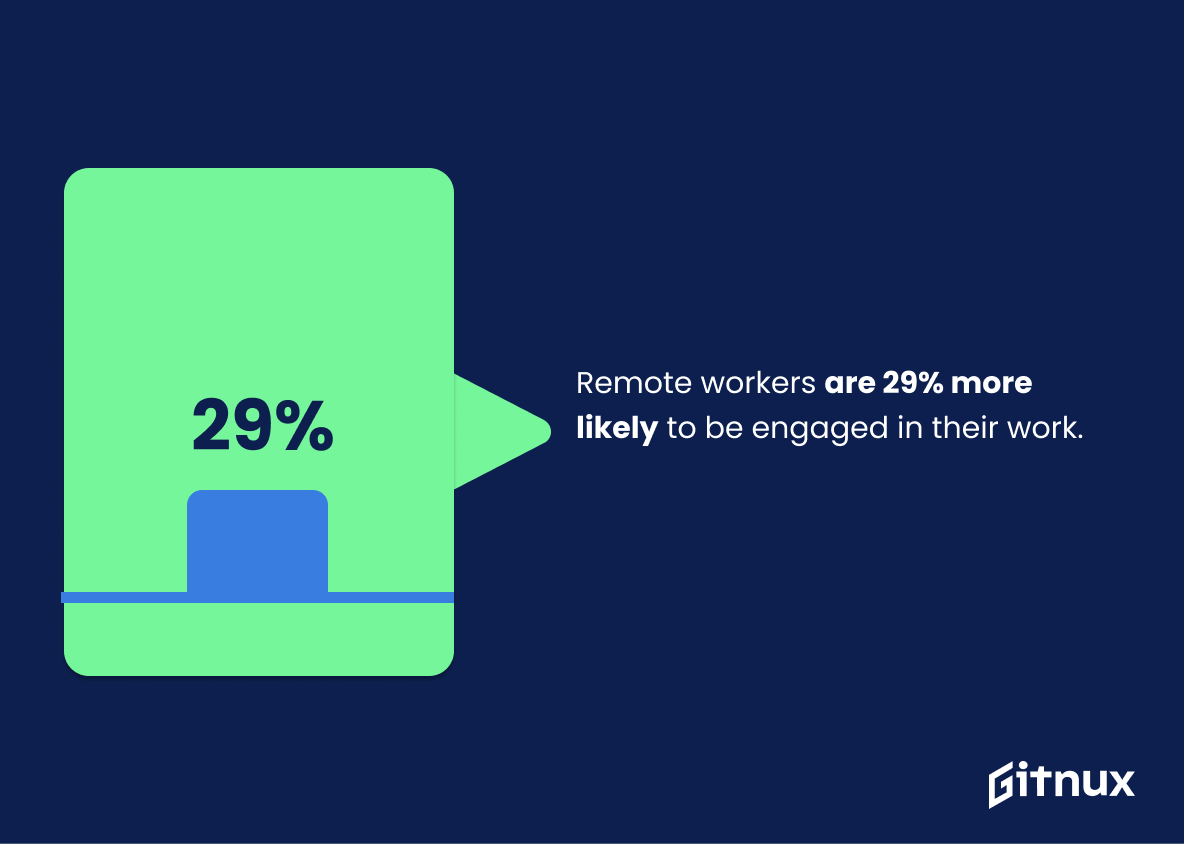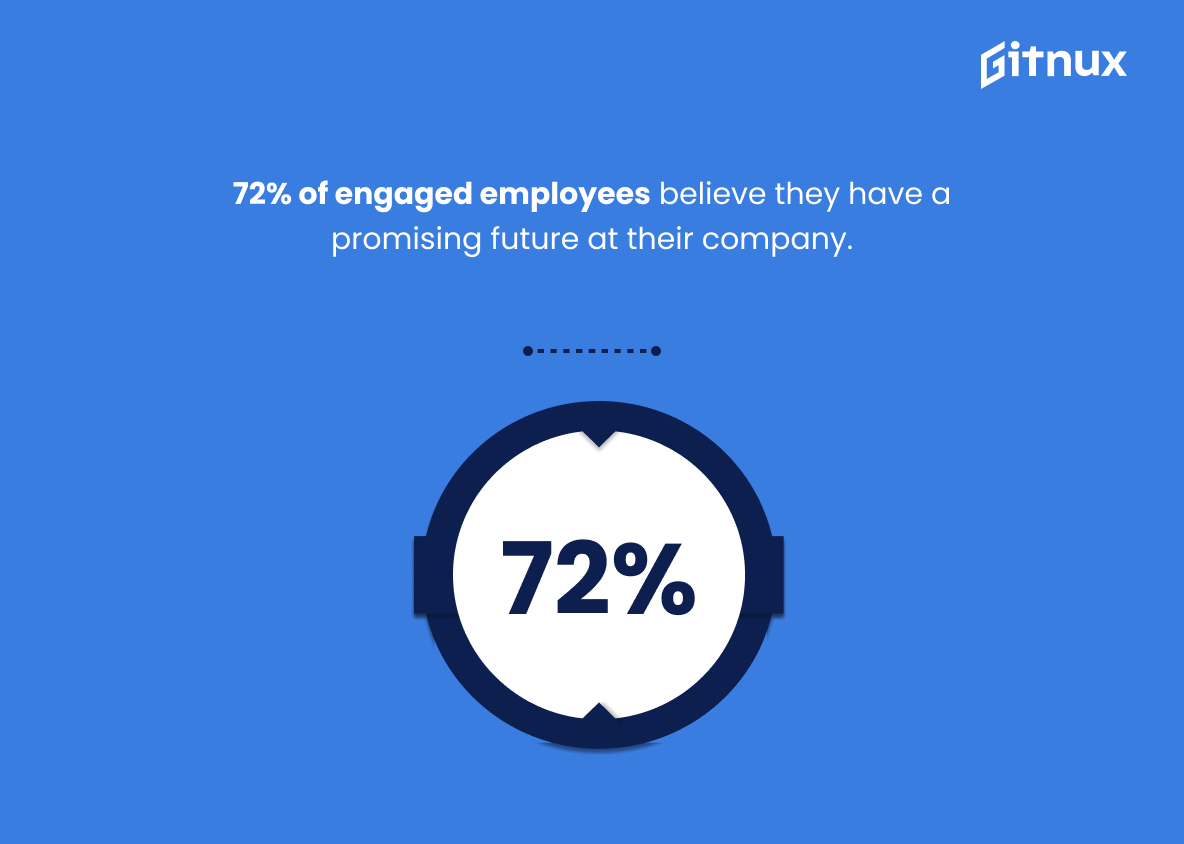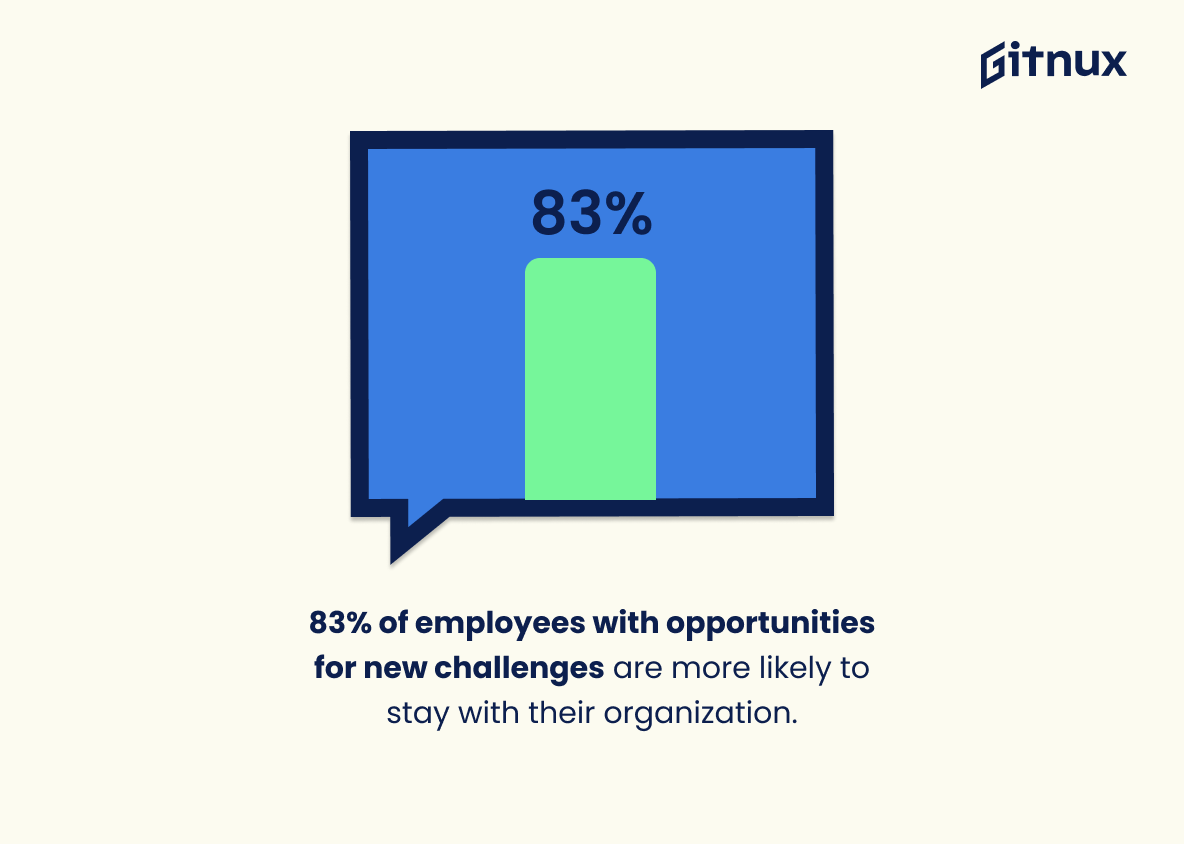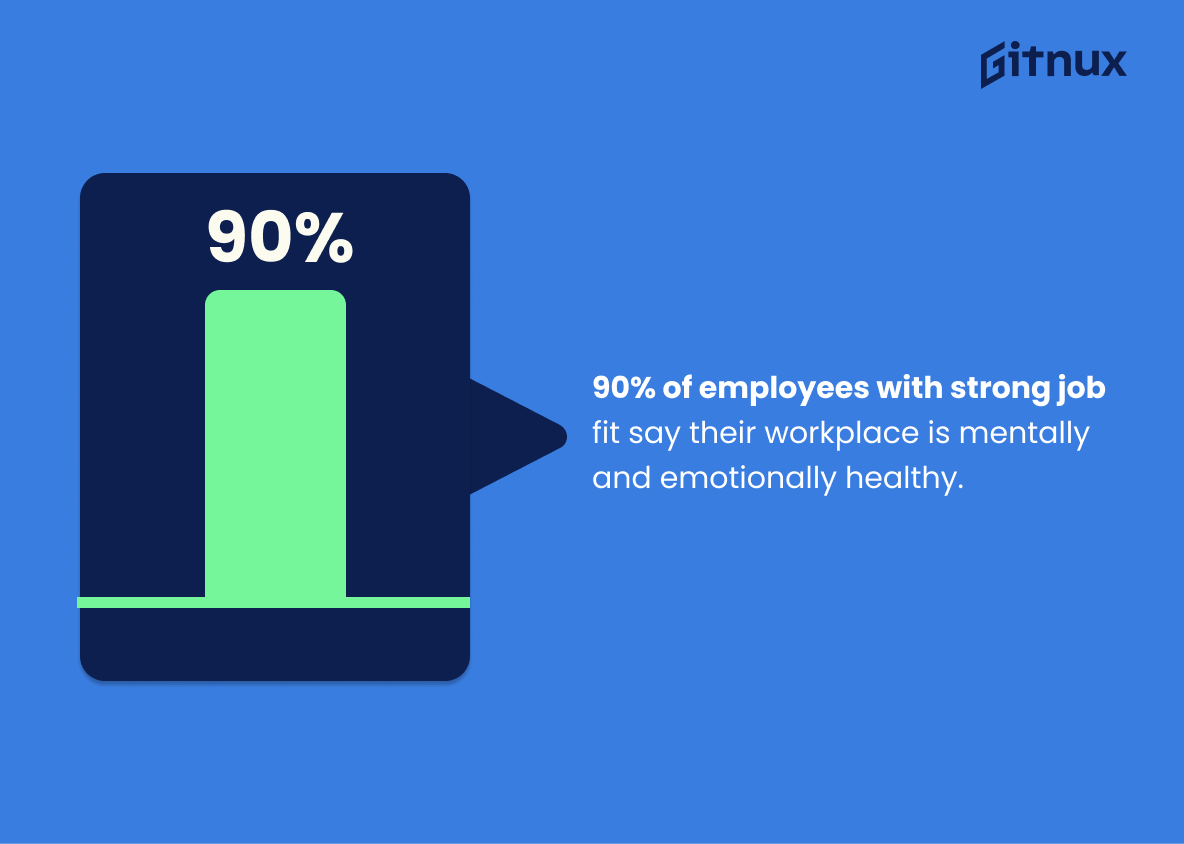Employee engagement is an essential part of any successful business. It’s crucial for companies to have as many highly engaged employees as possible, because it translates into higher productivity, better customer service, and greater overall success.
However, understanding how to measure and track employee engagement can be a challenge. In this article, we will provide you with an overview of employee engagement statistics, its benefits and some tips on how you can boost it among your team.
Employee Engagement: The Most Important Statistics
According to Gallup’s survey, only 15% of employees are actively engaged in their jobs.
There is an 83% increase in engagement when companies recognize small wins and efforts at work.
As decades of Gallup research shows, when employees are engaged their performance soars: highly engaged workplaces can claim 41% lower absenteeism, 40% fewer quality defects, and 21% higher profitability.
General employee engagement statistics
Up to 85% of the workforce worldwide either have a negative perspective about work or are more neutral. According to the report, 33% of US workers are engaged at work, approximately twice the worldwide average. On the other hand, the rate of employee engagement in Western Europe is at 10%. In the United Kingdom, employee engagement is only 8% and has declined steadily for many years.
Remote employees are 2.7x more likely to be engaged if they receive feedback from their manager weekly (vs. annually).
According to an HBR global survey, conveyed among senior-level executives from North America, Asia, Europe, MEA, and South/Central America, only 24 % of respondents say employees in their organization are highly engaged.
71% of respondents rank employee engagement as very important to achieving overall organizational success.
An HBR survey discovered that many companies find it challenging to measure the engagement and tie its impact to financial results: fewer than 50% of companies said that they are effectively measuring employee engagement against business performance metrics such as customer satisfaction or increased market share.
48% of executives believe that their companies comprised a similar mix of engaged/disengaged employees relative to their competition. 28% feel that there were too many disengaged employees.
There is a clear divide in perceptions of employee engagement between executive management and middle-management respondents. HBR found that executive management is far more engaged than their juniors, 40% of executives compared to 29% of senior management and 26% of other management.
According to Gallup’s survey, only 15% of employees are actively engaged in their jobs.
About 50% of US workers describe their job as a career, while 18% say it is a stepping stone to a career. 30% of workers say their job is “just a job to get them by”. Those who describe their job as a career tend to be at least 30 years old and well-educated, with higher incomes and holding full-time, salaried jobs.
49% of American workers say they are very satisfied with their current job. 30% are somewhat satisfied, and the remainder say they are somewhat dissatisfied (9%) or very dissatisfied (6%).
51% of employed Americans say they get a sense of identity from their job, while the other half (47%) say their job is just what they do for a living.
Managers account for at least 70% of the variance in employee engagement scores, and engagement is strongly linked to productivity.
29% of workers are pleased with the present career growth possibilities available to them at their companies. A whopping 30% of workers place a high value on professional and personal growth prospects. Yet, only 30% are satisfied with their present status.
Salaried workers are more often completely satisfied with pay than hourly-paid workers, 41% vs 29%.
Benefits of having high work engagement in your organization
Gallup’s researchers studied the differences in performance between engaged and actively disengaged work units. Work units in the top quartile in employee engagement outperformed bottom-quartile units by 10% in customer ratings, 22% in profitability, and 21% in productivity. Work units in the top quartile also saw significantly lower turnover (25% in high-turnover organizations, 65% in low-turnover organizations), shrinkage (28%), and absenteeism (37%) and fewer safety incidents (48%), patient safety incidents (41%), and quality defects (41%).
About 74% of younger employees would willingly take a pay cut to work at their dream workplace, and 23% of those looking for a new career would not need a pay raise to accept the position.
Thriving workers are 4x more likely to work for a company with swift decision-making and the resources to carry out their duties efficiently. Over 56% of employees value systems that help them enhance their abilities and prepare for new positions.
There is an 83% increase in engagement when companies recognize small wins and efforts at work.
Engaged employees are more aware of their environment. These workers pay attention to security measures and take the safety of their colleagues and their customers seriously. Highly engaged employees report a 70% decrease in security incidents and a 58% decrease in patient safety issues.
86% of organizations with higher levels of employee engagement agree that an engaged workforce is a key factor in creating loyal customers. Only 54% of organizations with lower level of engagement agree with this effect on customer loyalty.
As decades of Gallup research shows, when employees are engaged their performance soars: highly engaged workplaces can claim 41% lower absenteeism, 40% fewer quality defects, and 21% higher profitability.
Over seven years, companies with highly engaged workers grew revenues 2.5x as much as those with low engagement levels.
Lack of employee engagement and its consequences
According to Gallup, disengaged employees have 37% higher absenteeism, 18% lower productivity and 15% lower profitability. When that translates into dollars, you’re looking at the cost of 34% of a disengaged employee’s annual salary, or $3,400 for every $10,000 they make.
A study by the Conference Board on workplace engagement discovered that disengaged workers cost American businesses $450-550 billion annually. Disengaged employees are less responsible and accountable for their attitudes, behaviors, and motivations, and lower overall productivity and work quality.
The top reasons for people leaving their current workplaces are boredom (33%) and company culture which doesn’t fit with their values (24%).
Disengaged employees are 2.5x less likely to get weekly feedback than highly engaged employees. Employees are twice as likely to quit their jobs if they do not receive any acknowledgement for their work. Regular dialogue and feedback from managers are necessary to keep employee engagement high.
Only 21% of employees report that they are highly engaged at work. They’re just there for the paycheck, which means they’re doing enough to avoid being fired but aren’t likely to go above and beyond their primary responsibilities.
89% of employers believe that workers leave for another job to get better pay. However, the reality is that compensation is not the primary driver of employee turnover. Other factors such as corporate culture and office relationships weigh more heavily in decision-making.
Only 25% of employees worldwide feel connected to their company’s mission, and 50% do not find meaning or significance in their current role.
How to boost engagement in the workplace?
72% of respondents choose “recognition given to high performers” as the most critical factor in improving employee engagement. Followed by 70% for “individuals have a clear understanding of how the job contributes to strategy”, 70% for “senior leadership continually updates/communicates strategy” and 69% for “business goals communicated company-wide and understood”.
Gallup discovered that engagement climbs when employees spend some time working remotely and some time working in a location with their coworkers. Weekly face time with coworkers and managers affects engagement. The optimal engagement boost occurs when employees spend 60% to 80% of their time working off-site, or three to four days in a five-day workweek.
Employee engagement is one of the top drivers of sales growth. In fact, companies that have highly effective internal communications had 47% higher total returns to stakeholders. When the employees buy into the company’s goals and consider them their own, they’ll be more likely to make the goals a reality. 50% of employees say that a lack of transparency holds their company back.
39% of surveyed employees believe that people in their own organization don’t collaborate enough. Almost 75% of people rate teamwork and collaboration as critical to each day. There is a clear dissonance between the two and according to the study, employees and employers alike can stand to communicate better.
72% of respondents rank recognition given to high performers as having a significant impact on employee engagement.
Supplementary Statistics
85% of employees are not engaged at work, according to a Gallup report.
This highlights the need for employers to take action to ensure their employees are engaged and motivated in their work. This statistic serves as a call to action for employers to take steps to improve employee engagement and create a more positive work environment.
Highly engaged teams show 21% greater profitability, according to Gallup.
Investing in engaged teams can have a direct and positive impact on a company’s bottom line. This statistic is a compelling argument for why businesses should prioritize employee engagement and make it a key part of their organizational strategy.
Increasing employee engagement investments by 10% can increase profits by $2,400 per employee per year.
This highlights the potential for businesses to reap significant financial rewards by investing in their employees’ wellbeing and satisfaction. This is an invaluable insight for any business looking to maximize their profits and create a positive work environment.
77% of engaged employees believe they can positively impact the quality of their company’s products or services.
When employees are engaged, they are more likely to believe that their work can have a positive impact on the quality of their company’s products or services. This is an important insight for any business looking to maximize the effectiveness of their workforce and ensure that their employees are motivated to do their best work.
Engaged employees are 17% more productive than their non-engaged counterparts.
When employees are engaged, they are more productive and can help a business reach its goals more quickly. This statistic is a great way to illustrate the value of investing in employee engagement initiatives, and it can be used to encourage businesses to prioritize employee engagement in order to maximize their productivity.
Companies with engaged employees outperform those without, enjoying a 147% higher earnings per share.
Companies that prioritize engagement are reaping the rewards in terms of higher earnings per share. This is a strong incentive for businesses to invest in employee engagement initiatives, as it can have a direct impact on their bottom line.
37% reduction in absenteeism for top-quartile engagement companies compared to bottom-quartile companies.
Companies with higher levels of engagement have seen a significant decrease in absenteeism, indicating that employee engagement is an effective tool for reducing the amount of time employees are away from work.
This is an important statistic to consider when discussing the importance of employee engagement, as it demonstrates the tangible benefits that can be achieved when employees are engaged and motivated.
Decreased employee engagement can result in a 59% higher turnover rate.
When employees are not engaged, they are more likely to leave the organization, resulting in a significant financial cost. This statistic serves as a warning to employers that they must prioritize employee engagement in order to retain their staff and ensure their business remains successful.
Remote workers are 29% more likely to be engaged in their work.
Employees who work remotely are more likely to be engaged in their work, which could lead to increased productivity and job satisfaction. This could be a great incentive for employers to consider allowing their employees to work remotely, as it could lead to a more engaged and productive workforce.
72% of engaged employees believe they have a promising future at their company.
The majority of employees feel that their company is providing them with a positive outlook for their future, which is a strong sign that the company is taking steps to ensure their employees are engaged and motivated.
This statistic is a testament to the effectiveness of employee engagement strategies, and it can be used to demonstrate the importance of investing in employee engagement initiatives.
60% of employees believe that having a clear career roadmap would improve overall engagement.
A majority of employees feel that having a clear roadmap would lead to improved engagement, which is a key factor in employee satisfaction and productivity. This statistic is a valuable insight into the importance of providing employees with a clear path for their career development, and should be taken into consideration when discussing strategies for improving employee engagement.
83% of employees with opportunities to take on new challenges say they’re more likely to stay with their organization.
When employees are given the chance to grow and develop, they are more likely to remain with the organization. This is a key factor in employee engagement, as it demonstrates that employees feel valued and appreciated when they are given the chance to take on new tasks and responsibilities.
Organizations with above-average employee engagement boast 70% fewer safety incidents.
When employees are engaged, they are more likely to be aware of safety protocols and take them seriously. This can lead to fewer safety incidents, which can save organizations time, money, and resources. Furthermore, it can also help to create a safer work environment for everyone.
90% of employees with strong job fit say their workplace is mentally and emotionally healthy.
When employees are in roles that suit their skills and interests, they are more likely to feel satisfied and engaged in their work. This is an important factor in creating a productive and positive work environment, and should be taken into consideration when developing strategies to improve employee engagement.
30% of the employees in the US strongly agree that their managers involve them in goal-setting.
Employees feel their managers are taking an active role in their development and are invested in their success. This statistic is a valuable insight into the level of employee engagement in the US, and is an important factor to consider when discussing employee engagement statistics.
Conclusion
We can see, that employee engagement plays a big part in any organization’s success, as people are the main power source of any business to go towards its goals. Employers should keep track on how engaged their employees are and try to improve the situation if the results are not that positive. By analyzing employee engagement statistics, companies can better understand their employees and implement new strategies to increase work engagement and productivity.
Check out Workplace Productivity Statistics
References
Gallup: “State of the American Workplace” , cited in January 2023 (Source)
Harvard Business Review: “The Impact of Employee Engagement on Performance”, cited in January 2023 (Source)
Pew Research Center: “The State Of American Jobs”, cited in January 2023 (Source)
Team Building: “Employee Engagement Statistics & Facts for 2022”, cited in January 2023 (Source)
O.C.Tanner: “What kind of company culture do you have?”, cited in January 2023 (Source)
Demand Metric: “Employee Engagement”, cited in January 2023 (Source)
Bain: “The chemistry of enthusiasm”, cited in January 2023 (Source)
Forbes: “How Much Are Your Disengaged Employees Costing You?”, cited in January 2023 (Source)
Korn Ferry: “Breaking Boredom: Job Seekers Jumping Ship for New Challenges in 2018, According to Korn Ferry Survey”, cited in January 2023 (Source)
Trade Press Services: “Using Internal Communications to Enhance Business Growth” Gallup: “State of the American Workplace” , cited in January 2023 (Source)
Queens University of Charlotte: “Communicating In The Modern Workplace”, cited in January 2023 (Source)
ZipDo, cited June 2023: Employee Engagement Statistics
